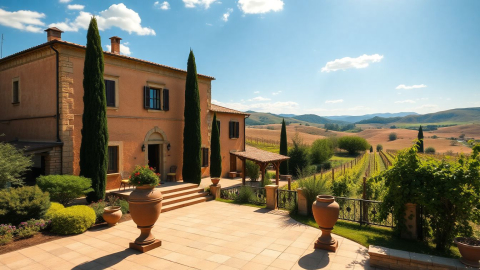Italian Countryside Interior Design: A Satirical Guide to Rustic Chic
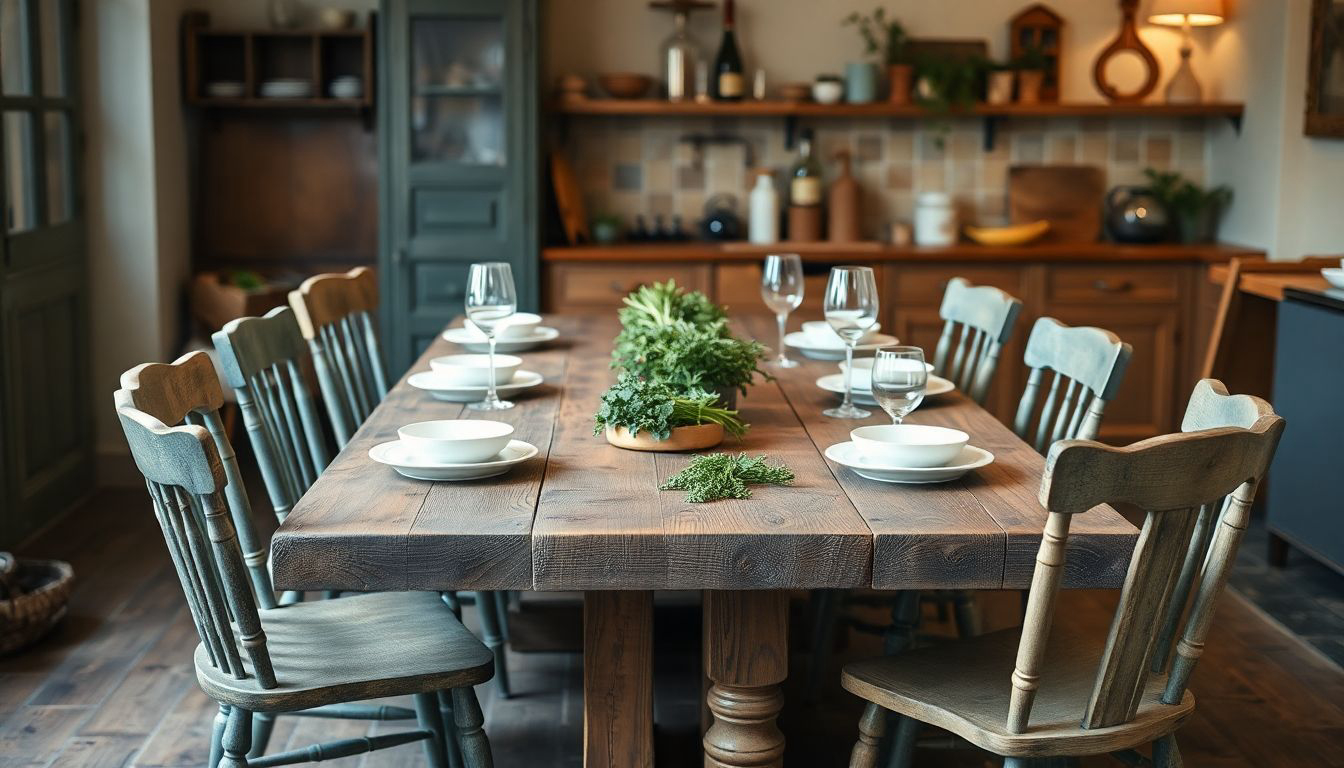
Ah, the Italian countryside! Where the wine flows like water, the pasta is always al dente, and every nonna's kitchen smells like heaven. But why settle for a mere vacation when you can bring that dolce vita right into your own home? Welcome to the world of Italian Countryside interior design, where rustic charm meets high-end pretension, and every crack in your antique terracotta tiles tells a story (probably about how much money you spent on them).
The Art of Pretending You Live in a 16th-Century Farmhouse
Let's face it, your suburban three-bedroom has about as much in common with a Tuscan villa as a microwave pizza has with authentic Neapolitan. But fear not, aspiring contadini! With a few simple tricks, you too can convince your friends that you've magically transported a slice of rural Italy into your living room.
Step 1: Embrace the Crumbling Aesthetic
First things first: those pristine walls have got to go. Nothing says "authentic Italian farmhouse" quite like the look of centuries-old plaster barely clinging to life. Don't have the patience to wait 400 years for natural wear and tear? No problem! Simply hire a local teenager to take a sledgehammer to your drywall. Voila! Instant character.
As Andrew Trotter, a designer who went from hating Puglia to restoring ancient farmhouses there, puts it:
"It's a place that's grown on me rather than an immediate love."
Much like that mold you're now cultivating in the corners of your faux-ancient walls.
Step 2: Wood, Stone, and More Wood
Remember, in the world of Italian Countryside design, if it isn't made of wood or stone, it might as well be plastic. Your IKEA furniture? Kindling. Those sleek modern appliances? Hide them behind rustic wooden panels faster than you can say "anachronism."
For true authenticity, consider installing a massive stone fireplace in your living room. Don't have the space or budget for that? No worries! Simply stack some firewood in the corner and insist it's a "sculptural installation." Art!
The Color Palette of Your Nonna's Dreams
Forget about those trendy Millennial pinks or Gen Z yellows. In the Italian countryside, we stick to the classics: earth tones, warm pastels, and enough shades of beige to make a khaki factory jealous.
The Fifty Shades of Terracotta
Your walls should mimic the sun-baked hills of Tuscany. Think warm oranges, soft yellows, and enough variations of brown to make your head spin. And if anyone dares to call it "boring," simply sniff haughtily and mutter something about "timeless elegance."
As one designer put it:
"There are colors and materials that are timeless, and that is what I wanted to use."
Because nothing says "timeless" quite like a room that looks like it hasn't been redecorated since the Renaissance.
A Pop of Color (But Not Too Much, We're Not Savages)
Feel free to add a splash of color here and there. A deep red throw pillow, a vase of sunflowers, or perhaps a bowl of lemons (which, let's be honest, you'll never actually use for cooking). Just remember: moderation is key. We're going for "rustic chic," not "circus tent."
Furnishing Your Faux Farmhouse
Now that we've set the stage, it's time to fill it with furniture that screams "I have a summer home in Chianti" (even if the closest you've gotten to Italy is the Olive Garden).
The Dining Table: Center of the Universe
In any respectable Italian home, the dining table is sacred. It should be massive, made of solid wood, and look like it could survive a nuclear apocalypse. Bonus points if it has visible scratches and wine stains – each one tells a story (or so you'll claim at your next dinner party).
Surrounding this monstrosity, place an assortment of mismatched chairs. Remember, in the Italian countryside, uniformity is for city slickers and the French.
Textiles: Because Comfort is Overrated
Forget about those plush, sink-into-them sofas. We're aiming for a look that says, "I value authenticity over lumbar support." Opt for firm seating with rough-hewn upholstery. Linen, cotton, and anything that looks like it was woven by a 12th-century monk are all fair game.
Don't forget the obligatory crocheted doilies and embroidered cushions. Nothing says "Italian grandmother chic" quite like a needlepoint of the Last Supper adorning your sofa.
Accessorizing: The Devil's in the Details
Now that we've got the big pieces in place, it's time to clutter – I mean, accessorize – your space with all the trinkets and baubles that scream "I've been to at least one Italian flea market."
The Kitchen: A Copper Wonderland
Your kitchen should look like a medieval alchemist's lab crossed with a high-end cookware store. Copper pots and pans, hanging from every available surface? Check. An assortment of wooden spoons that you swear make the pasta taste better? Double check.
And let's not forget the obligatory hanging herbs. Whether they're fresh or have been drying since the last papal conclave, they're essential for that "I could whip up a feast for 20 at a moment's notice" vibe.
The Living Room: A Museum of Rustic Randomness
This is where you really get to flex your "I have eclectic taste" muscles. Antique farm tools as wall art? Absolutely. A collection of dusty wine bottles you're definitely going to turn into candle holders someday? Of course. A massive clock that looks like it was stolen from a 15th-century church tower? It's practically mandatory.
As Fiona Corsini di San Giuliano, owner of a transformed Tuscan farm, wisely notes:
"Many of the curious-looking and unpredictable corners, I have made for the sole purpose of painting them."
Because nothing says "authentic" quite like creating fake authenticity for the 'gram.
The Great Outdoors (Indoors)
No Italian Countryside home is complete without bringing a bit of nature inside. And no, your sad office plant doesn't count.
The Indoor Garden: Eden in Your Living Room
Transform a corner of your home into a mini-conservatory. Fill it with terracotta pots bursting with herbs, a lemon tree that will never actually produce lemons, and enough climbing vines to make Tarzan feel at home.
Don't have a green thumb? No problem! There's always the option of high-quality silk plants. Just be sure to occasionally spritz them with water when guests are around for that authentic "I definitely didn't just buy these at HomeGoods" look.
Conclusion: La Dolce Vita (Sort Of)
Congratulations! You've now transformed your humble abode into a parody – I mean, perfect replica – of an Italian Countryside retreat. Sure, your bank account may be as empty as a bottle of Chianti at a book club meeting, and your family might be wondering why the sofa feels like it's stuffed with straw, but just look at those exposed wooden beams!
Remember, the key to true Italian Countryside design is convincing yourself that discomfort is a small price to pay for authenticity. So sit back on your rock-hard settee, sip some lukewarm espresso from a tiny cup, and bask in the knowledge that you've achieved peak rustic chic.
Just don't be surprised if actual Italians mistake your home for a theme park attraction. Salute!
References and Further Reading
More Articles
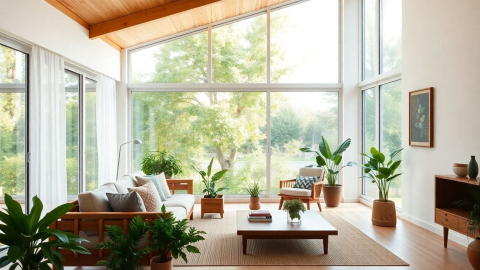
Biophilic Interior Design: Nurturing the Human-Nature Connection in Modern Spaces
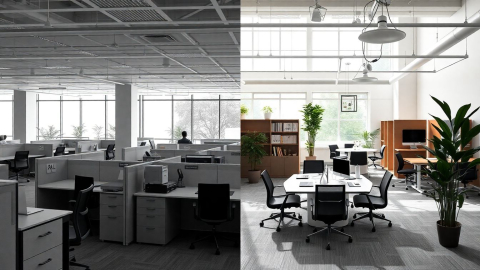
The Evolution of Office Interior Design: Creating Productive and Inspiring Workspaces
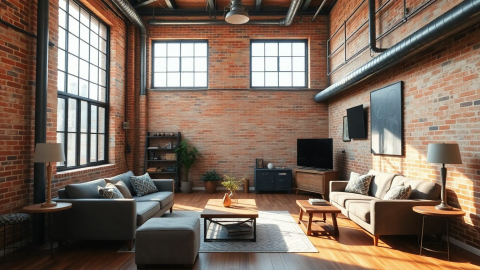
The Industrial Revolution in Interior Design: Raw Beauty Meets Modern Elegance
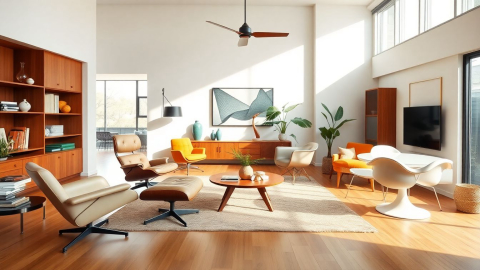
The Timeless Allure of Mid-Century Modern Interior Design: A Comprehensive Guide
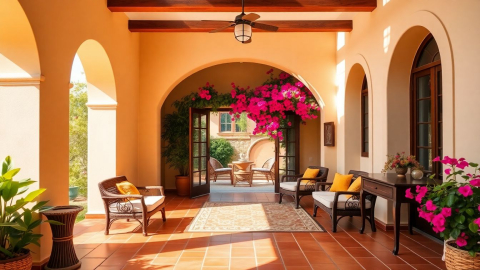
Embracing the Warmth of Mediterranean Interior Design: A Comprehensive Guide
